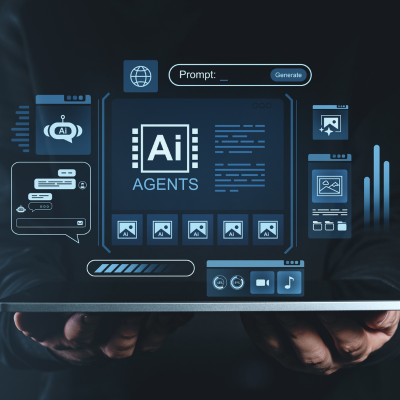Software testing is no longer a gatekeeper at the end of the development cycle—it is evolving into a continuous, intelligent, and deeply integrated engineering discipline. In 2025, AI in software testing is not just an emerging trend but a foundational shift, enabling organizations to deliver higher-quality software faster, with greater security, and at unprecedented scale. This transformation is driven by the convergence of advanced automation, machine learning, and the rise of agentic and generative AI systems that are rewriting the rules of quality assurance (QA).
This article explores the technical, organizational, and cultural changes shaping software testing today, highlights the most impactful tools and methodologies, and offers actionable guidance for software architects, engineers, and QA leaders. It also showcases how a forward-looking educational program in Mumbai—the Software Engineering, Agentic AI and Generative AI Course—equips professionals with the skills, mindset, and hands-on experience needed to lead in this new era of AI-powered quality engineering.
Introduction: AI in Software Testing as a Strategic Imperative
The pressure to release software rapidly without compromising quality has never been greater. In response, AI in software testing has moved from experimental labs to the core of CI/CD pipelines, product dashboards, and daily developer workflows. AI and machine learning (ML) are now essential for generating test cases, optimizing test suites, detecting anomalies, and even autonomously maintaining tests as applications evolve. This is not just about doing the same things faster—it’s about enabling QA teams to focus on higher-value activities like risk analysis, exploratory testing, and user experience (UX) validation, while AI handles the repetitive, data-intensive tasks.
The integration of AI into testing is supported by significant industry investment. Analysts project that a substantial portion of IT budgets will be directed toward AI-driven testing solutions in the coming years, reflecting the strategic importance of these technologies in achieving business goals. The synergy between AI and human expertise is critical: while AI excels at pattern recognition, data analysis, and automation, human judgment remains essential for interpreting results, designing effective test strategies, and ensuring ethical, fair, and explainable AI systems.
The Evolution of Software Testing: From Manual Checks to AI-Driven Quality Engineering
To appreciate the current state of software testing, it’s valuable to understand its evolution:
- Manual Testing Era: Initially, testing was a manual, post-development activity focused on defect hunting. This approach was slow, error-prone, and often resulted in late-stage rework.
- Automation Revolution: The advent of test automation tools allowed teams to script repetitive tests, run them at scale, and integrate testing into the development lifecycle. This marked the beginning of continuous testing and the shift-left movement, where testing starts as early as possible in the software development lifecycle (SDLC).
- DevOps and QAOps: The rise of DevOps brought QA into the heart of the delivery pipeline. QAOps—the integration of quality assurance into operations—ensures that testing is not a bottleneck but a seamless part of the software delivery process.
- AI and ML Inflection: Today, AI and ML are transforming testing from a reactive to a predictive and proactive discipline. AI-powered tools can generate test cases, prioritize tests based on risk, detect flaky tests, and even “self-heal” by adapting to changes in the application under test. Agentic AI systems are emerging that can autonomously write, run, and fix tests, pushing the boundaries of what’s possible in QA.
This progression reflects a broader shift from quality assurance to quality engineering—a discipline that combines technical rigor, data-driven decision-making, and continuous improvement.
Cutting-Edge Features, Tools, and Trends in AI-Powered Software Testing
AI and Machine Learning: The Engines of Modern Testing
AI and ML are now embedded across the testing lifecycle, delivering tangible benefits:
- Automated Test Case Generation: AI models analyze code changes, historical test data, and user behavior to generate relevant, high-coverage test cases. This reduces manual effort and ensures that testing keeps pace with rapid development.
- Self-Healing Tests: Traditional UI automation tests often break when the application’s interface changes. AI-powered frameworks can detect these changes and automatically update selectors, minimizing maintenance overhead and reducing flakiness.
- Smart Bug Detection and Root Cause Analysis: By analyzing patterns in test results and production data, AI can identify anomalies, predict defect-prone areas, and even suggest fixes. This accelerates triage and resolution, especially in complex, distributed systems.
- Test Data Synthesis: AI can generate realistic, varied test data, enabling comprehensive coverage without the manual effort of data preparation. This is especially valuable for testing edge cases and scenarios that are difficult to replicate manually.
- Predictive Test Prioritization: Not all tests are equally important. AI can prioritize test execution based on risk, code changes, and historical failure rates, ensuring that the most critical areas are tested first.
The Rise of Agentic and Generative AI in Testing
Agentic AI represents a new frontier in software testing. These systems go beyond scripted automation—they can autonomously design test strategies, execute tests, analyze results, and even propose improvements without human intervention. For example, an agentic AI might monitor a production application, detect a performance regression, design a new load test, execute it, and report the findings—all while the QA team sleeps.
Generative AI, powered by large language models, is also making an impact. It can draft test plans, write test cases from natural language requirements, and even generate documentation, freeing engineers to focus on more complex, creative tasks. However, these technologies are not without challenges: hallucinations, flaky tests, and over-reliance on automation are real concerns that require careful governance and human oversight.
Test Automation Tools and Platforms: What’s New in 2025
The tooling landscape for AI in software testing is rapidly evolving. Modern platforms offer features such as:
- Scriptless Automation: Enabling business analysts and domain experts to create and maintain tests without writing code, democratizing test automation and accelerating adoption.
- AI Test Creation Agents: These tools can generate entire test suites from plain English requirements, dramatically reducing the time to create and maintain test assets.
- Seamless CI/CD Integration: Testing is no longer a separate phase—it’s embedded into IDEs, version control, and deployment pipelines, enabling real-time quality feedback.
- Predictive Analytics Dashboards: Providing teams with actionable insights into test coverage, defect trends, and release readiness.
While several commercial and open-source tools are available, the key is to choose platforms that align with your team’s skills, workflows, and strategic goals. The most effective teams combine these tools with a culture of continuous learning and collaboration.
Continuous Testing and QAOps: Quality as a Continuous Process
Continuous testing is now a cornerstone of modern software delivery. By integrating automated tests into every stage of the pipeline—from commit to production—teams can detect issues early, reduce rework, and accelerate release cycles. QAOps extends this philosophy by unifying testing, development, and operations, ensuring that quality is everyone’s responsibility and that feedback loops are tight and actionable.
Advanced Tactics for Maximizing the Impact of AI in Software Testing
To fully realize the potential of AI in software testing, teams should adopt a strategic, holistic approach:
- Combine AI with Human Expertise: AI excels at repetitive, data-intensive tasks, but human judgment is essential for interpreting results, designing test strategies, and handling edge cases. The most effective QA teams are those that leverage the strengths of both.
- Implement Shift-Left and Shift-Right Testing: Start testing as early as possible in the SDLC (shift-left) and continue monitoring in production (shift-right) to catch issues throughout the software lifecycle.
- Optimize Test Suites with AI: Regularly analyze your test suites to identify redundancies, gaps, and flaky tests. Use AI to prioritize high-impact tests and retire those that no longer add value.
- Adopt Model-Based and Predictive Testing: Use AI models to predict which components are most likely to fail and focus testing efforts accordingly. This is especially valuable in large, complex systems where exhaustive testing is impractical.
- Invest in AI-Powered Analytics: Use data-driven insights to continuously improve your testing strategy, track key metrics (e.g., defect escape rate, test coverage), and demonstrate the ROI of your QA investments.
- Promote Cross-Functional Collaboration: Break down silos between QA, development, and data science teams. Encourage knowledge sharing, joint problem-solving, and a shared responsibility for quality.
- Stay Ahead of Ethical and Responsible AI Testing: As AI becomes more pervasive in testing, ensure that your systems are transparent, fair, and accountable. Proactively address bias, explainability, and security in your AI-powered QA processes.
- Engage with the Broader QA and AI Community: Participate in open-source projects, contribute to forums, and share your experiences. The collective intelligence of the community accelerates innovation and helps everyone avoid common pitfalls.
The Power of Community, Content, and Continuous Learning in QA
The rapid evolution of AI in software testing demands a culture of continuous learning and knowledge sharing. Platforms like GitHub, Stack Overflow, and internal forums enable practitioners to exchange scripts, best practices, and lessons learned. Storytelling—through case studies, blogs, and conference talks—helps teams understand the real-world impact of AI and inspires broader adoption.
Educational programs play a critical role in preparing the next generation of QA leaders. A well-designed course should combine theoretical foundations with hands-on projects, real-world tools, and opportunities to learn from industry veterans. It should also foster a community of practice, where students can collaborate, share insights, and build professional networks.
Real-World Impact: How Leading Organizations Are Leveraging AI in Testing
While specific vendor case studies are valuable, the broader trend is clear: organizations that embrace AI in software testing are achieving faster release cycles, higher quality, and lower costs. For example, a global technology company faced with testing millions of lines of code across diverse products integrated AI models to generate and prioritize test cases, implemented self-healing automation, and used predictive analytics to focus testing on the most risky areas. The result was a significant reduction in test maintenance effort, accelerated releases, and improved defect detection rates.
These successes underscore the transformative potential of AI in QA—but they also highlight the importance of skilled practitioners who can design, implement, and govern these advanced systems.
Preparing for the Future: Education and Career Pathways in AI-Powered QA
For software professionals aiming to lead in this dynamic field, education is more important than ever. The Software Engineering, Agentic AI and Generative AI Course offered in Mumbai is designed to meet this need. This program stands out for its:
- Comprehensive, AI-Led Curriculum: Covering the full spectrum of AI in software testing, from foundational concepts to advanced agentic and generative AI applications. Students gain hands-on experience with the latest tools, frameworks, and real-world datasets.
- Practical, Project-Based Learning: The course emphasizes applied skills, with projects that simulate industry challenges and require students to design, implement, and optimize AI-powered test automation solutions.
- Industry-Experienced Faculty: Instructors bring deep expertise from both academia and the tech industry, ensuring that the content is both rigorous and relevant.
- Career Support and Networking: The program offers internship opportunities, placement support, and access to a professional network, helping students transition into roles as QA engineers, test automation architects, and AI quality specialists.
- Flexible Learning Options: With both in-person (Mumbai) and online modalities, the course accommodates diverse learning preferences and schedules.
- Focus on Continuous Testing and QAOps: Students learn how to integrate testing into DevOps pipelines, leverage AI for continuous quality improvement, and adopt QAOps practices that are essential for modern software teams.
Compared to generic training programs, this course provides a unique blend of technical depth, practical experience, and career advancement support—making it an ideal choice for professionals who want to future-proof their skills in AI quality assurance and software testing.
Actionable Guidance for Software Architects and QA Engineers
To thrive in the era of AI-powered software testing, consider the following recommendations:
- Evaluate and Adopt AI Test Automation Tools: Explore platforms that support scriptless automation, self-healing tests, and predictive analytics. Prioritize solutions that integrate seamlessly with your existing toolchain and workflows.
- Integrate Testing Early and Continuously: Embrace shift-left testing to catch defects as early as possible, and extend monitoring into production to ensure ongoing quality.
- Leverage AI for Test Optimization: Use AI to analyze your test suites, remove redundancies, and focus on high-risk areas. Continuously measure and improve your test coverage and effectiveness.
- Foster Cross-Team Collaboration: Break down silos between QA, development, and data science. Encourage joint ownership of quality and shared learning.
- Monitor and Measure the Impact of AI: Track key metrics such as defect escape rate, test flakiness, and cycle time. Use data to demonstrate the value of your QA investments and guide continuous improvement.
- Stay Current with Industry Trends: Engage with the QA and AI communities, attend conferences, and participate in open-source projects. Continuous learning is essential in a field that evolves as rapidly as AI in software testing.
- Consider Advanced Education: For those looking to accelerate their careers, a specialized course like the Software Engineering, Agentic AI and Generative AI Course provides the skills, hands-on experience, and professional network needed to lead in this transformative domain.
Conclusion
AI in software testing is not a futuristic vision—it’s the new reality for quality engineering. By embracing AI-powered automation, intelligent test optimization, and integrated DevOps practices, organizations can deliver higher-quality software faster and more securely than ever before. For software professionals, this shift represents both a challenge and an opportunity: the chance to move beyond repetitive manual tasks and become architects of intelligent, autonomous, and continuously improving QA systems.
For those ready to lead this transformation, education is a critical enabler. The Software Engineering, Agentic AI and Generative AI Course in Mumbai offers a unique combination of technical rigor, practical projects, and career support—preparing graduates to excel in the next wave of AI-powered quality assurance and software testing.
FAQs
Q1: What are the top trends in AI-powered test automation tools for 2025?
AI-driven tools are focusing on scriptless automation, self-healing tests, predictive test prioritization, and seamless CI/CD integration. These platforms enable teams to create, maintain, and optimize test suites with unprecedented efficiency.
Q2: How does AI improve continuous testing in DevOps pipelines?
AI enables faster feedback loops, automated regression testing, and real-time quality dashboards. By predicting high-risk areas and prioritizing tests, AI makes continuous testing more efficient and reliable.
Q3: What is shift-left testing and why does it matter?
Shift-left testing integrates QA activities early in the SDLC, helping teams identify and fix defects sooner, reduce rework, and accelerate releases.
Q4: How can AI optimize test cases and test suites?
AI analyzes test coverage, identifies redundancies, prioritizes critical tests, and suggests improvements—keeping test suites lean, effective, and maintainable.
Q5: What role does agentic AI play in software testing?
Agentic AI systems can autonomously design, execute, and maintain tests, enabling QA teams to focus on complex, strategic tasks while AI handles repetitive workflows.
Q6: Why consider a specialized course for AI in software testing?
A comprehensive course provides the technical depth, hands-on experience, and industry connections needed to lead in AI-powered QA. Programs like the Software Engineering, Agentic AI and Generative AI Course offer practical projects, expert faculty, and career support—preparing students for the future of quality engineering.










